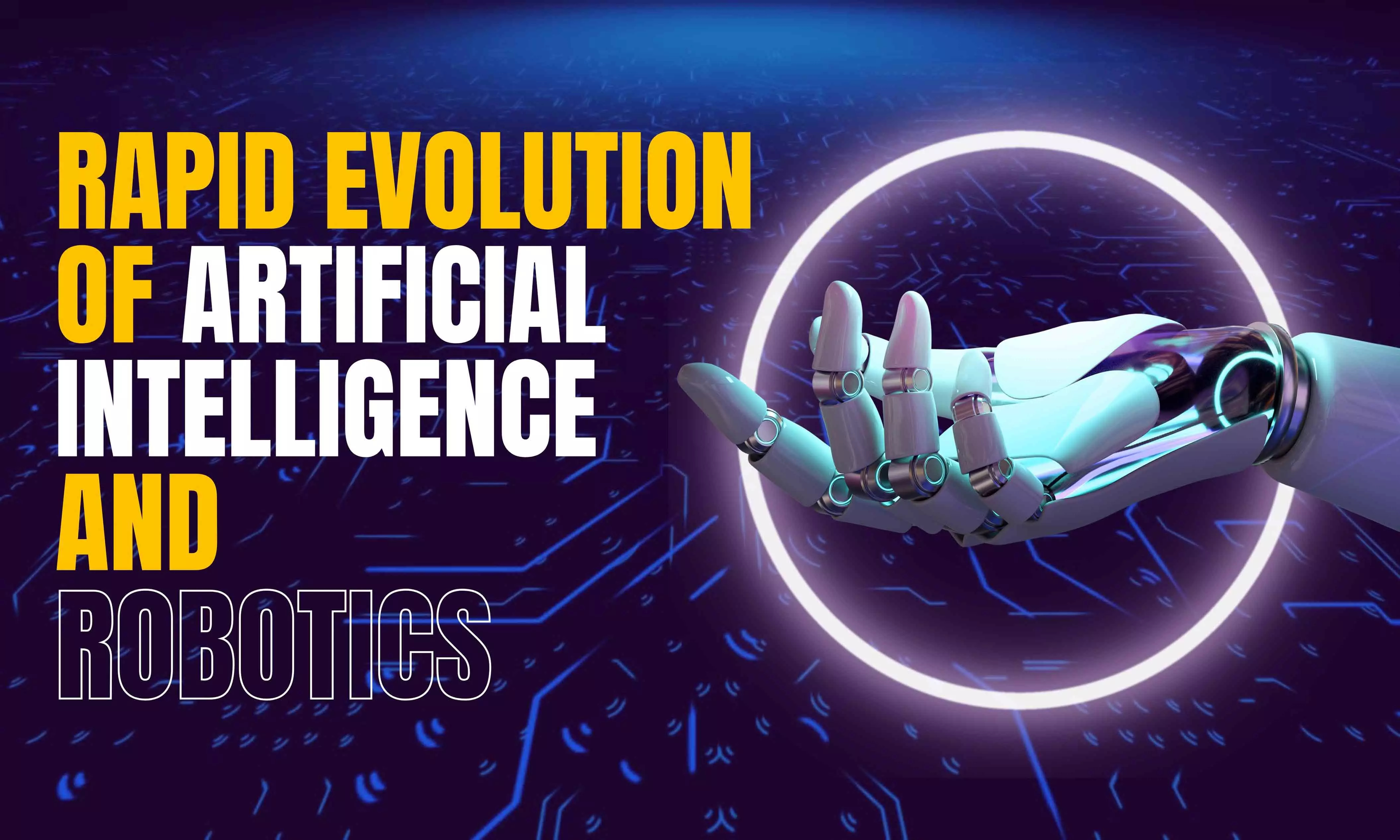Rapid Evolution of Artificial Intelligence and Robotics
AI and robotics are revolutionising industries by enhancing automation, precision, and safety. Discover how advanced technologies are transforming healthcare, manufacturing, and daily life.
Rapid Evolution of Artificial Intelligence and Robotics

Artificial Intelligence (AI) has undergone a rapid evolution in recent years, making its mark across a wide range of industries.
From detecting fraudulent activities in the financial sector and automating repetitive tasks in manufacturing to predicting real estate trends and managing supply chains, AI has become the foundation of modern technological advancements.
And one of the most transformative areas where AI is being extensively leveraged is robotics.
Understanding AI in Robotics
AI-enabled robots represent a significant leap forward in automation and intelligence. These machines are designed to perform a variety of tasks with minimal human intervention.
By integrating AI, robots gain the ability to interact with their environment in increasingly sophisticated ways.
They can grasp objects, make data-driven decisions, and adapt to changes in real-time, all of which enhance their utility across various applications.
Key capabilities of AI in robotics include:
Problem-Solving: Robots equipped with AI can analyse complex scenarios, make decisions based on that analysis, and solve problems that arise during operation.
Machine Learning: This allows robots to improve their performance over time by learning from past experiences and adapting their behaviour accordingly.
Natural Language Processing (NLP): Enables robots to understand and process human language, facilitating more intuitive interactions between humans and machines.
Sensory Abilities: Robots can be equipped with sensory technology that mimics human senses, such as vision and touch, to better understand and navigate their surroundings.
AI robots are becoming increasingly prevalent in sectors such as healthcare, automotive, manufacturing, and services. Their ability to streamline operations, enhance precision, and improve safety is driving their widespread adoption.
Key Aspects of Robotics and AI
The integration of AI with robotics is leading to transformative advancements across various industries.
Here’s a closer look at the key aspects that define this synergy:
Machine Learning and Deep Learning: These are fundamental components of AI that allow robots to analyse vast amounts of data, learn from it, and improve their performance over time. For example, a robot arm used in a factory can learn to assemble parts more efficiently as it gains experience, adapting to changes in the production process and optimising its operations.
Computer Vision: It is a technology that enables robots to interpret and understand visual information. This capability is crucial for tasks such as object recognition, navigation, and quality inspection. For instance, a self-driving car relies on computer vision to detect and avoid obstacles on the road, ensuring safe and accurate navigation.
Natural Language Processing (NLP): NLP allows robots to understand and respond to human language, making interactions more seamless and intuitive. A virtual assistant, for example, can understand and process voice commands in multiple languages, enabling users to communicate with the assistant naturally and effectively.
Autonomous Systems: Autonomous systems focus on developing robots that can perform tasks independently, without human intervention. These robots use sensors, AI algorithms, and control systems to operate autonomously. A warehouse robot that sorts and navigates packages without human assistance is an example of how autonomous systems are being implemented to enhance efficiency in logistics.
Human-Robot Interaction: The study of human-robot interaction aims to create effective collaborations between humans and robots. This involves developing user-friendly interfaces and safety protocols to ensure smooth cooperation. Collaborative robots, or cobots, in manufacturing settings, work alongside human workers, assisting with tasks while ensuring safety and efficiency.
Robotic Hardware Design: Robotic hardware design involves creating the mechanical and electronic components that form the physical structure of robots. This aspect is critical for ensuring that robots can perform specific tasks efficiently and accurately.
Ethics and Safety: As robots and AI systems become more integrated into various aspects of daily life and industry, ethical considerations and safety measures are paramount. Ensuring that robots operate responsibly and do not pose risks to humans is a key focus.
For instance, robots used in elderly care must be designed to operate safely and respect the privacy of patients.
Applications of AI Robotics
The applications of AI robotics are vast and diverse, spanning multiple industries:
Industrial Automation: AI robotics is revolutionising industrial automation by enhancing production processes and improving efficiency. Automated assembly lines in car manufacturing plants, for example, use robots to perform repetitive tasks with high precision, reducing production time and costs.
Healthcare: In healthcare, robots equipped with AI are used for surgical assistance and rehabilitation. Robotic surgical systems help surgeons perform delicate operations with greater accuracy, while rehabilitation robots aid in patient recovery by providing targeted physical therapy.
Logistics: The logistics industry benefits from AI robotics through the use of robots for warehousing and delivery tasks. Drones, for instance, are employed to deliver packages quickly and efficiently, while warehouse robots manage inventory and sort packages to streamline operations.
Consumer Products: AI robotics has also made its way into consumer products, offering convenience and automation for home use. Robotic vacuums that clean floors autonomously are a popular example, providing users with a hands-free solution for maintaining clean and tidy living spaces.
AI and robotics are set to redefine various sectors by enhancing human capabilities and operational efficiency. With continuous advancements in these technologies, the innovation potential is immense.

